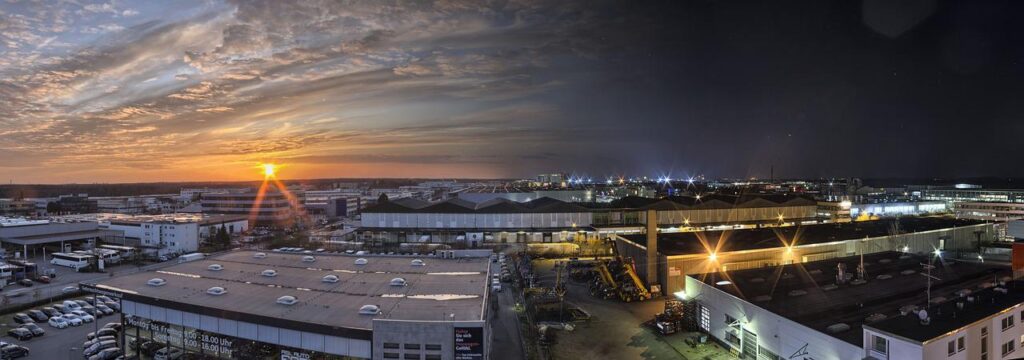Dark Nights for the Soul: Fading Skies, and the Regenerative Potential of Natural Darkness
Lani MacLean | May 6, 2022

Between land and sky, there is a rhythm of light. Life on Earth was built on the balance of night and day. Linked to these diurnal patterns, everything from the life cycles of plant and animals, to humanity’s calendars, mythologies, and cultures were created in relationship with cycles of light and darkness, and the fathomless features of the night sky. Where humanity has grown towards the habit of lighting our spaces around the clock in an expression of territory, ownership and claiming of space, the glow of light pollution has overtaken expansive regions on the Earth’s surface. With the spread of lights and the skyglow they create, we see the role of lighting in separating us from natural rhythms and cascading effects on our health, ecological balance, and cultural memory.
Light Pollution and the Illusion of Safety
Defined by the International Dark-Sky Association (IDA) as “the inappropriate or excessive use of artificial light,” light pollution has become a normal backdrop to life in urban environments, but the impacts are reaching further than the cities themselves. As development expands outwards and frays the edges of remaining natural areas, light pollution can be detected as far as 100 miles from major metropolitan areas. Satellite Imagery and maps like the New World Atlas of Light Pollution offer valuable insights, accurately representing the extent to which artificial lighting has spread across the surface of the planet. An ambient indicator of economic development, one study measuring the growth of light pollution’s radiance and extent determined that Earth’s artificially lit outdoor area grew by 2.2% per year from 2012 to 2016, with a total radiance growth of 1.8% per year. Researchers have determined that light pollution now affects 80% of the world’s population, depriving millions of people access to natural darkness, unable to see the expansive galaxy views that pass overhead every night.
Ultimately, the human need for nighttime light is rooted in survival. The first fires of our ancestors procured warmth and protection, and this link between light and security through hours of darkness remains consistent. With the rise of cities and urbanization, the elements of private property and the creation of a public realm have influenced the way lighting is designed, and “safety lighting” accounts for much of the light that floods the sky. Yet when the notion that lighted areas are safer is put to the test, studies have found that lighting may help people feel safer, but the actual frequency of criminal activity is largely due to other factors. Findings indicate that a majority of property related crimes like vandalism or burglary occur during daylight hours, and additional investigations revealed how lighting can even enable the illicit activities property owners are attempting to discourage.

Living Costs of Light Pollution
Beyond our conscious experience of day and night, all living things share a biologically ingrained responsiveness to light. Being “phase-locked” with diurnal (night/day) cycles, humans are responsive to light on a cellular level, and this 24-hour circadian rhythm is a critical component to hormonal, psychological, and physical health. Although we’ve grown to appreciate the conventions of nightlife, natural darkness is a critical factor in environmental health, and excessive exposure to light is associated with various health consequences that include increased stress, anxiety, headaches, and disrupted sleep cycles.
Having an abundance of light during nighttime hours has dramatically changed the economy, shifting our cultural connection with night to commodified hours of productivity and entertainment. It is among night-shift workers that exposure-related health disorders are the most pronounced. Critical to the maintenance of a 24-hour economy, night-shift workers are disproportionately recruited from communities of color, and other studies reveal geographic inequities in exposure to light pollution among inner-city populations and communities of color. Urban centers experiencing constant states of illumination are often far outside an accessible distance from natural dark sky areas, perpetuating broader inequalities and disrupting cultural connections that are directly linked with a dark night sky.
In areas touched by light pollution, side effects have been recorded at nearly every scale. Like humans, animals and plants have likewise evolved with nightly cycles. The synchronizing elements of night and day are necessary to ground patterns for active and resting hours. Without regular immersion in darkness the health and livelihood of global ecosystems have become compromised.
For animals that are active in daylight, light pollution encroaches on recovery hours. Considering however, that the majority of mammals are actually nocturnal, light pollution is a force of habitat degradation. Places animals might have occupied or moved through are no longer viable due to increased exposure from the light. For creatures that rely on features of the night sky (e.g. the moon or the milky way) for navigation, artificial light sources are a major hazard. In response to the frequent losses among migrating birds, the Audubon Society’s “Lights Out” program serves to inform communities about the hazards of artificial light, in addition to a list of actions that can be taken at different scales to support safer migration routes. Evidence also exists for the impact of nighttime lighting on pollinator species, as well as disturbance in the frequently overlooked realms of aquatic ecosystems as deep as the ocean floor. As the disturbances of light pollution ripple outwards, the seasons themselves reflect the accumulated impact, as the prolonged light exposure coaxes plants to bloom and bud prematurely, cascading into dysregulation at a planetary scale.
Stressed by the light, the rest of the living world continues to deteriorate under the careless over-use of electric lighting. The human ecosystems of illumination are a critical factor driving our insensitivity and disregard towards the living world around us. Where views of the night sky raised humanity to know their place as a species, we, and the rest of the living world retain the cellular programming that longs for a return of healthy diurnal rhythms.

Cultural Costs of Light Pollution
When work has separated millions from their ancestral lands and traditions, the ability to preserve and reclaim relationships with the night sky is critical to the survival and expression of cultural heritage. For Indigenous peoples living in urban diasporas, the night sky is often a critical source of cultural continuity, and light pollution is a persistent symptom of settler colonialism in the landscape. As urban settlements and extraction enterprises extend their reach into undeveloped lands, even astronomical observatories are forced to retreat, developing increasingly remote locations to view the stars. As an essential component and focal point of traditional ecological knowledge, Astronomical Heritage weaves philosophy, science, language and storytelling, and the orienting power of the night sky echoes its importance through these deep records of human relationships with nature.
Designing for Darkness
Ultimately, we still need to light our spaces in ways that support a sense of security and safety, but we must also refocus our practices in ways that consider natural darkness as a critical element in human and environmental health. Organizations like IDA have compiled comprehensive guides for communities to attain Dark-Sky designation, and designers have advocated for further efforts redefine our approaches to measuring darkness. Researcher Jane Slade advocates for calculating a project’s emissions of lumens outside of natural daylight hours, and incorporating this measurement in a “Darkness Design Plan.” By weighting the importance of darkness, a healthier design can be achieved.
While there are many obstacles to the attainment of natural darkness, the night has always had a life of its own. In our avoidance of the dark, we’ve lost touch with the phenomenal experience of mystery and our sensitivity to planetary cycles. By setting our intentions to reweave natural darkness into our landscapes, we stand to regain our restorative connection to the rhythm of night and day, and the expansive skies that restore a universal perspective to life on Earth.

As a student of life and Landscape Architecture, Lani MacLean draws a holistic vision from her undergraduate studies in Geography. She is deeply interested in the intersections of culture, climate and landscape, and intends to continue exploring and supporting these connections as she continues to grow her practice.